The Guildhall in Derry/Londonderry, Northern Ireland, is a historical building with a rich and varied past. It has served various purposes over the years, from a town hall to the site of the Bloody Sunday Inquiry. This Grade A listed building has been destroyed and restored multiple times, reflecting the resilience and spirit of the people of Londonderry. In this article, we explore the history of the Guildhall, from its humble beginnings in the 1600s to its modern-day role as a cultural and administrative center.
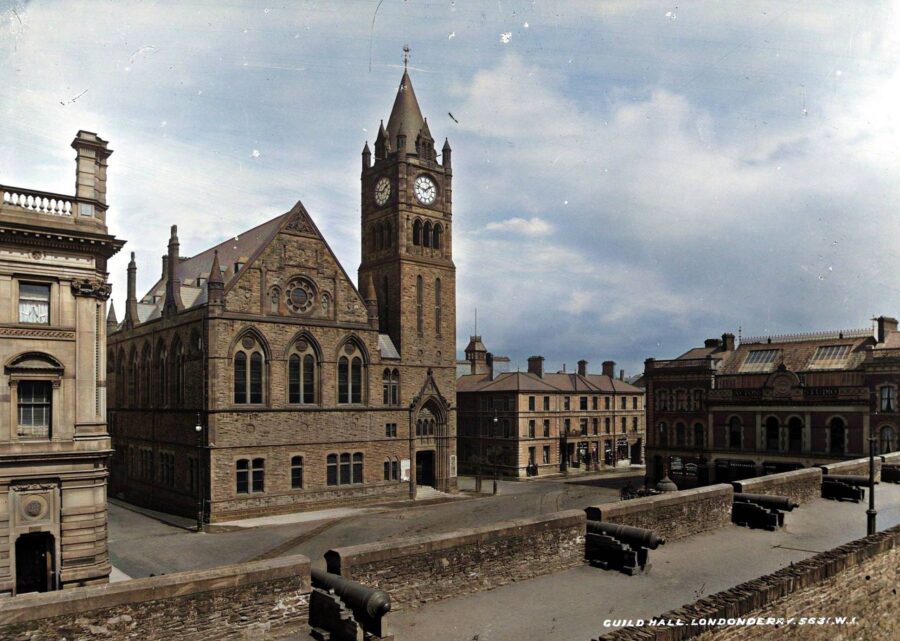
The Diamond and the Original Town Hall
The original town hall in Derry/Londonderry was built in the 1600s in the Diamond area of the city. This building, however, met a tragic end during the Siege of 1689, which saw it destroyed. The need for a new town hall eventually led to the construction of the Guildhall in the late 19th century.
The Construction of the Guildhall
In 1887, the Honourable The Irish Society funded the construction of the Guildhall on land reclaimed from the River Foyle. The project cost £19,000, which is equivalent to £1.5 million today. The building was named the Guildhall in honour of its connection to the City of London and its guilds. The Guildhall was officially opened in 1890 as the administrative center for Londonderry Corporation, and it remains the only surviving guildhall in Ireland that is still in civic use.

Destruction and Restoration
Over its 120-year history, the Guildhall has been destroyed twice. The first incident occurred in 1908, when a fire ravaged the building. The second happened in 1972, during the Troubles, when bomb attacks severely damaged the structure. Despite these setbacks, the people of Londonderry have continually worked to restore and preserve the Guildhall.
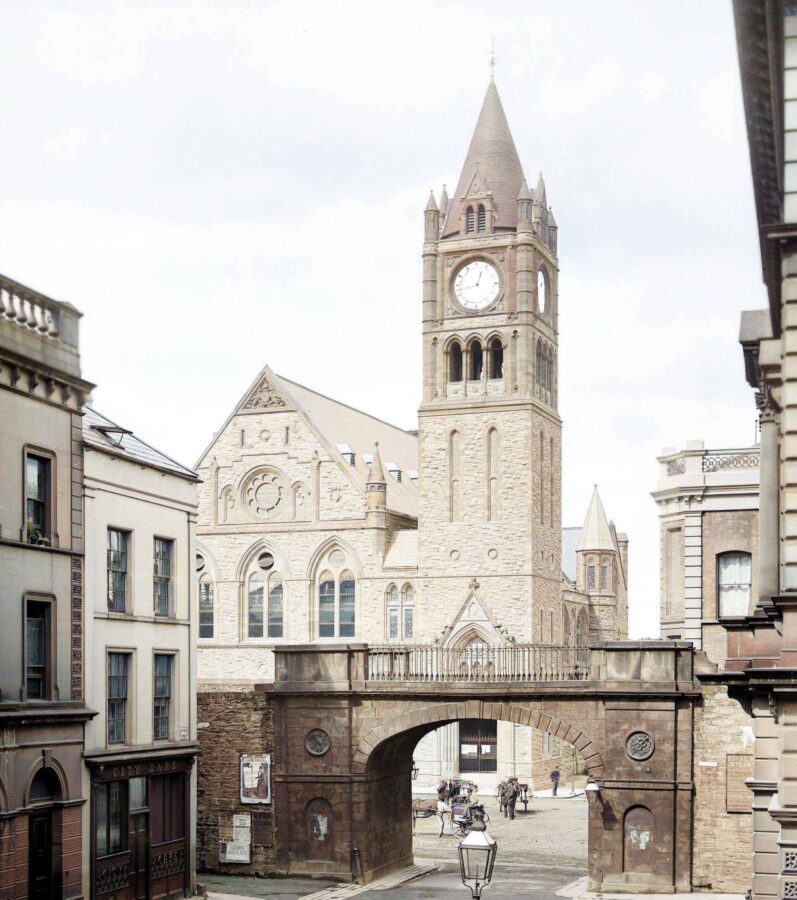
Notable Features and Stories
The Guildhall is home to many significant features and has a wealth of stories to tell. Among its highlights are:
- Stained Glass Windows: The building boasts 23 stained glass windows that narrate the story of the city. Many of these windows were gifted by the London Companies.
- The Guildhall Clock: Designed as a replica of Big Ben in London, the Guildhall Clock was once the largest of its kind in Ireland.
- Time Capsule: When the foundation stone for the Guildhall was laid in 1887, a time capsule was buried underneath it. The capsule was recently uncovered, and its contents are now on display on the first floor of the building.
- Bloody Sunday Inquiry: Between 2000 and 2005, the Guildhall served as the seat for the Bloody Sunday Inquiry, which was led by Lord Saville and published in June 2010.
- Major Restoration: A £9.5 million restoration, completed in 2013, saw the refurbishment of the Guildhall and the development of visitor areas and interpretation by Consarc and H & J Martin.
- The Guildhall Organ: Installed in the Main Hall in 1891, the Guildhall organ is the largest in Ulster, with the exception of the Mulholland Organ in the Ulster Hall in Belfast.
Conclusion
The Guildhall is a testament to the resilience and determination of the people of the city. Despite facing destruction and adversity, this historic building has been lovingly restored and preserved for future generations to enjoy. Today, the Guildhall continues to serve as an important administrative and cultural center for the people of Londonderry, a symbol of the city’s enduring spirit.



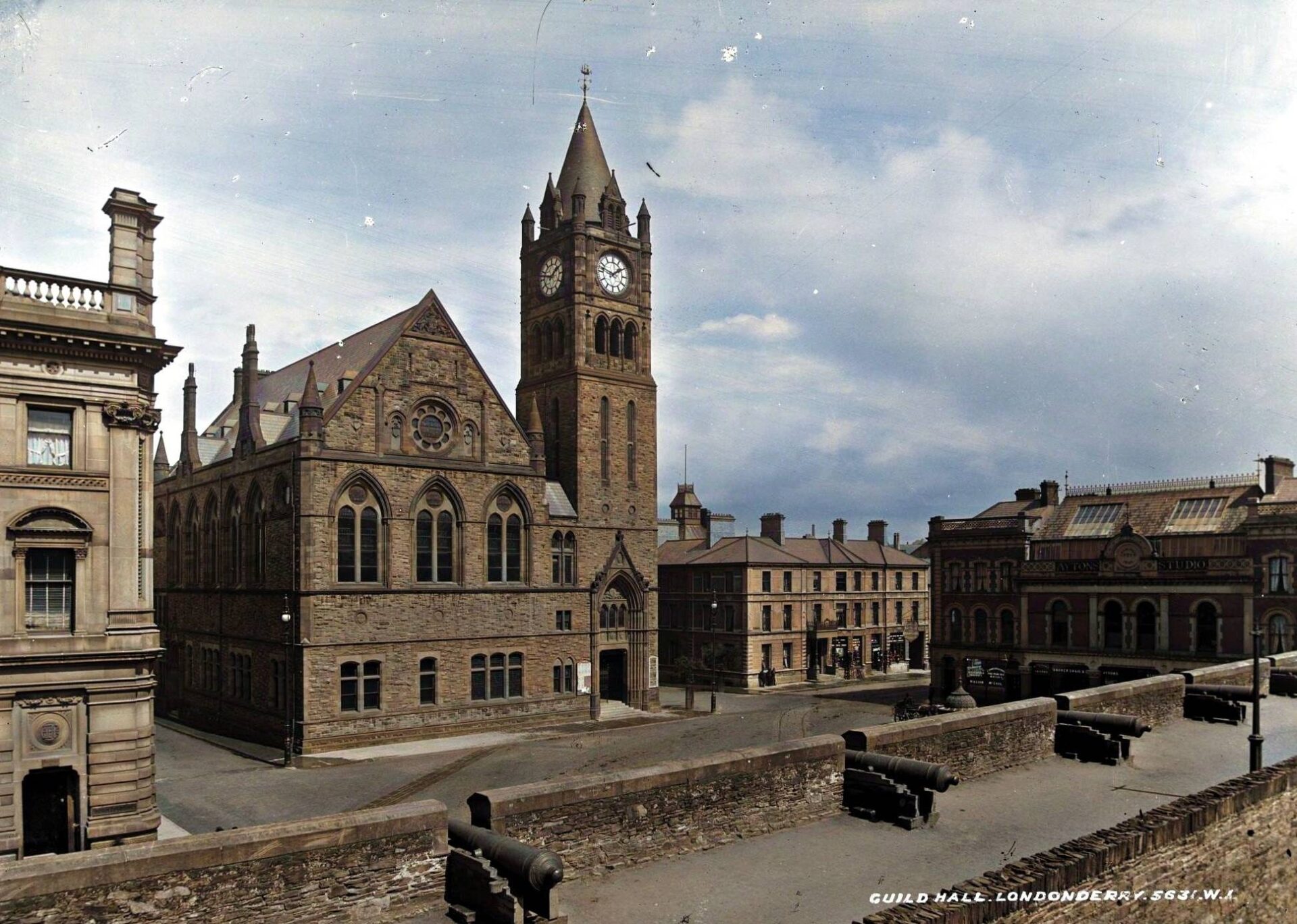
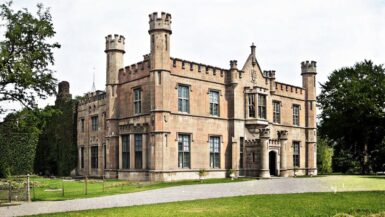

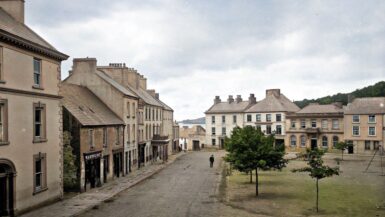
Leave a reply